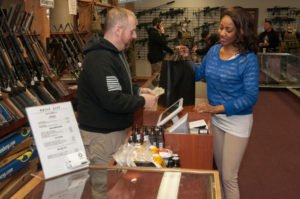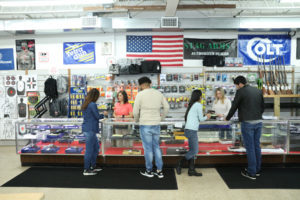An estimated 80 million Millennials in the U.S. spend an estimated $600 billion annually, making this an important market segment to the industry. (Ph0to: NSSF)
Shoppers of the Millennial generation are proving to be a boom audience for retailers seeking new customers. But what do you need to know about these particular shoppers in order to successfully make them loyal patrons?
Millennials include males and females, college grads and non-grads and they are typically between the ages of 21 to 35 years old. According to a recent report by businesswire.com, an estimated 80 million Millennials in the U.S. spend an estimated $600 billion annually. That’s almost 30 percent of all personal consumer spending now, and they are forecasted to contribute 35 percent of spending by 2030. I think you’ll agree, millennial spending is important to our firearms industry.
Millennials are super people, with super budgets and super incomes and, more importantly, a super passion for what they personally desire. Understanding this customer is key to the future of FFL retailing, especially with the surge of online shopping and e-commerce outlets that continue to infiltrate the more traditional in-store way of shopping. Lucky for every FFL, firearms purchased online must be transferred in-person in a brick-and-mortar store, driving many of these new shoppers through your front doors.

Millennials often buy products in physical stores and not always online, as many like to say about this age demogrphic. (Photo: NSSF)
Don't Listen to the Myths
I’ve had clients tell me that Millennials are hurting their business because they do all their shopping online.
In reality this is not the case. Most Millennials make most of their purchases off-line. Only about a third of this generation make their purchases on a desktop computer, and just 16 percent of Millennials make their purchases on a mobile device.
Millennial women shop in stores more than men, but that could be due to the nature of what they buy. If, as stereotypes would have it, women are buying more fashion and men are buying more hard goods, such as tools, outdoor gear and firearms, then it would make sense that shopping venues are not as much gender-based as they are product-based. In other words, if you haven’t expanded your product lines to cater to female shooters, you should!
There’s a real difference between older Millennials (30-35) and younger (20-29). I was surprised to learn that older Millennials are more likely to make a purchase on their mobile phone or tablet, while younger millennials are more likely to purchase in a physical store.
Another surprising fact is when they shop for something, both online and in a store, they are far more likely to make a purchase in a store than they are online. That’s very good to know before the Millennial customer visits your store, because if a younger Millennial is visiting you to make their purchase, you’re probably unknowingly doing something that is attracting this high-expectation and savvy-spending customer. Your task is to figure out what that is and capitalize on it.
It shouldn’t surprise you that almost 80 percent of millennials are influenced by price. Even as much as they are looking for other value in their products like authenticity, local sourcing, ethical production, peer reviews and a great shopping experience, nothing beats a discount — no matter how old you are.

Millennials are not so much entitled, as we often hear, rather they simply expect that brands value the customer’s time.
If You Don’t Have “It” In Stock, Tread Lightly!
Millennials not only grew up in the world of technology with the internet at their fingertips, they also grew up with smartphones and access to responses in real-time. Millennials are not so much entitled, as we often hear, rather they simply expect that brands value the customer’s time.
A large majority of Millennials expect to get a response within 10 minutes of reaching out for customer service via social media, and they also expect the same speed of response when posting a query via text messaging. In other words, you need to meet this expected level of fast response or they’re mentally moving on at lightning speed to the next product or retail outlet.
John Bocker is an NSSF Security Consultant Team Member, A Certified Business Strategy Consultant for the Small Business Administration, and the Managing Director at JB Group, LLC, based in Denver, Colorado. JB Group provides FFL security, compliance and business strategy consulting to FFL’s throughout the United States.






